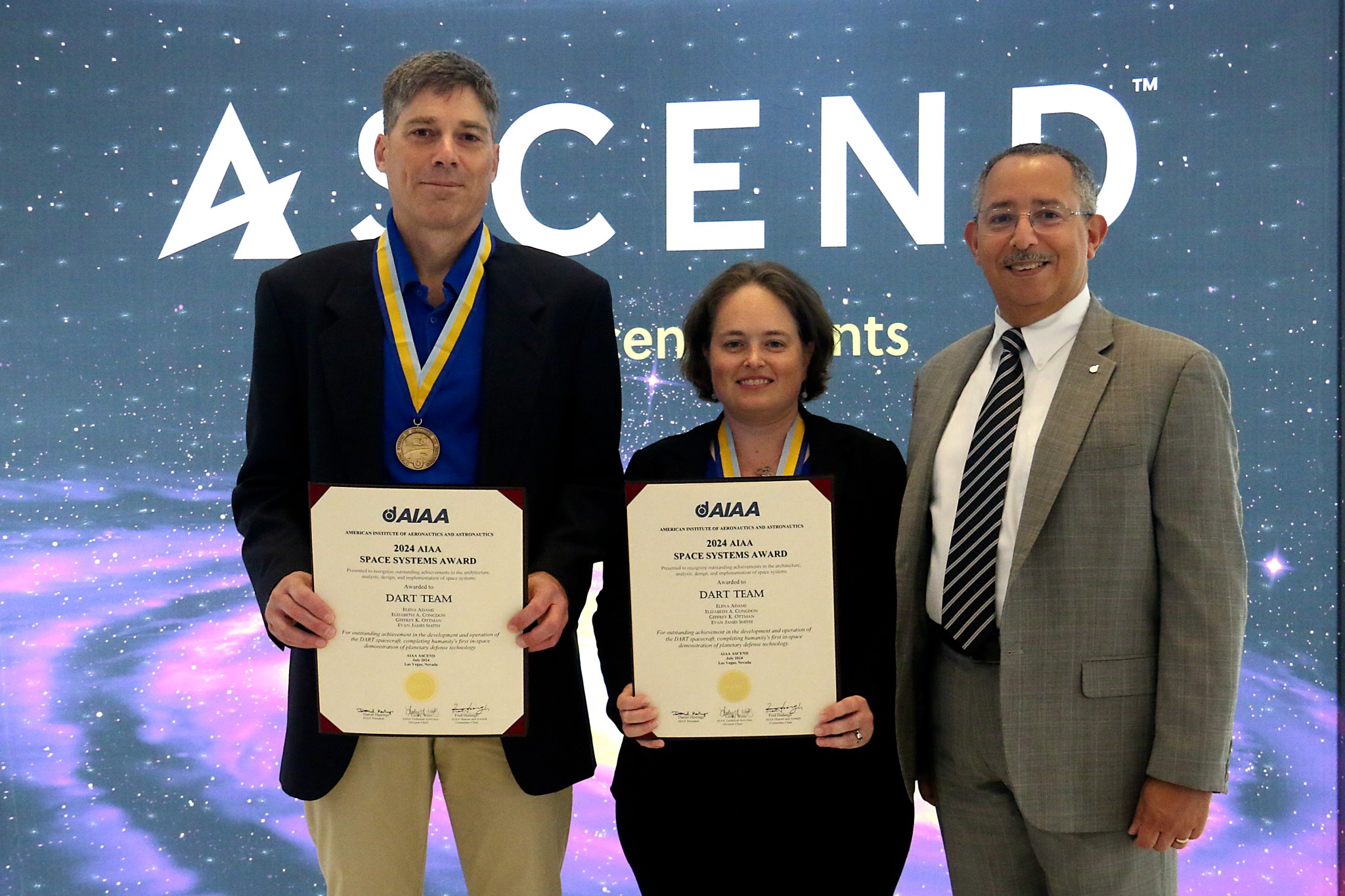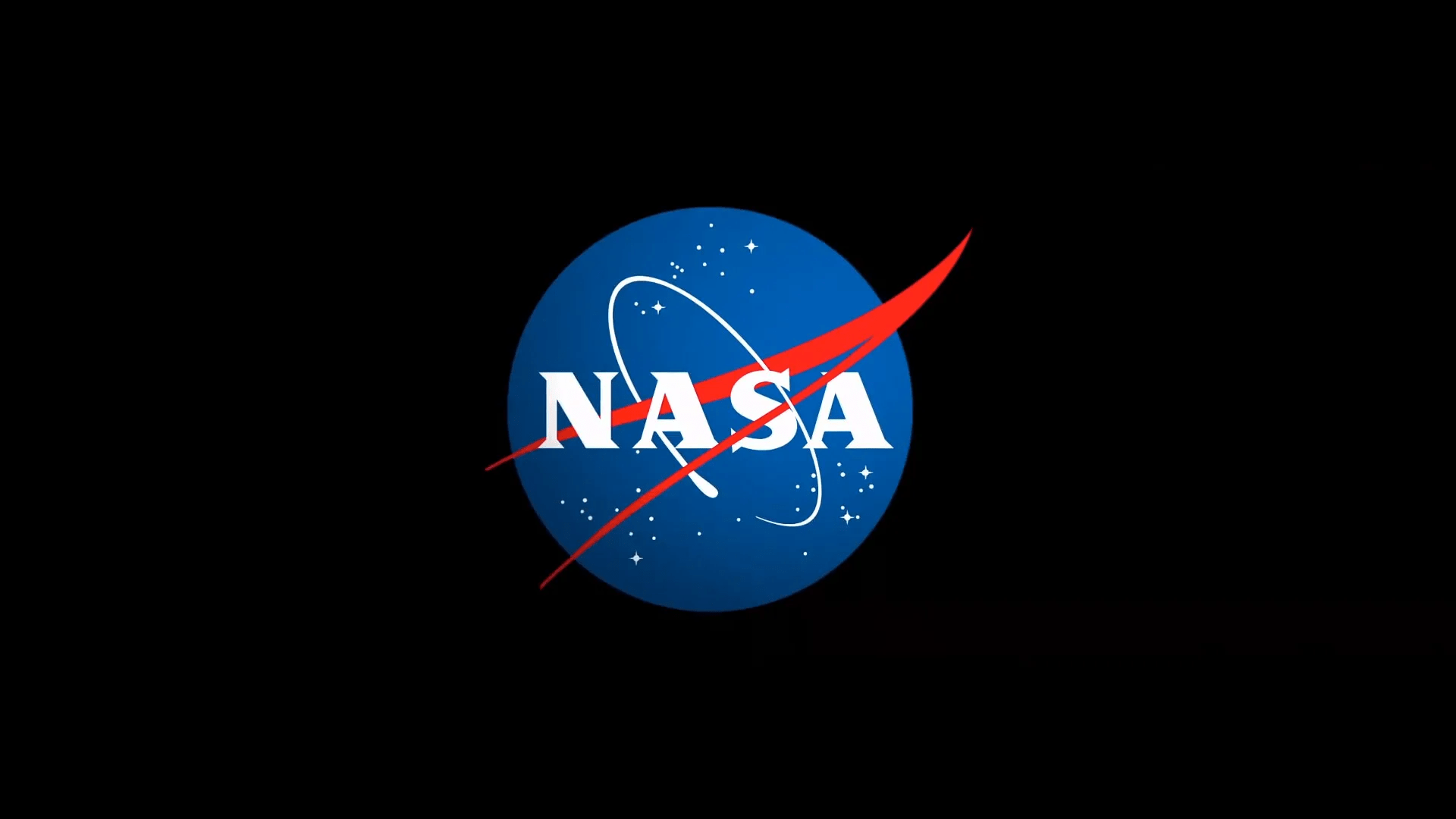2 min read
NASA’s DART Team Earns AIAA Space Systems Award for Pioneering Mission
NASA’s DART (Double Asteroid Redirection Test) mission continues to yield scientific discoveries and garner accolades for its groundbreaking achievements. The mission team was recently recognized by the American Institute of Aeronautics and Astronautics (AIAA)with the 2024 Space Systems Award during this year’s AIAA ASCEND event, held July 29 to Aug. 2 in Las Vegas.

The award, presented by the AIAA Space Systems Technical Committee, celebrates outstanding achievements in the architecture, analysis, design and implementation of space systems. The DART team was lauded for “outstanding achievement in the development and operation of the DART spacecraft, completing humanity’s first in-space demonstration of planetary defense technology.”
Designed, built and operated for NASA by the Johns Hopkins Applied Physics Laboratory (APL) in Laurel, Maryland, the DART spacecraft was launched in 2021 and, roughly 10 months later, successfully impacted the asteroid Dimorphos in the fall of 2022. The deliberate collision altered the asteroid’s orbit around its larger companion asteroid, Didymos, by 33 minutes. That historic achievement showcased the potential to divert hazardous asteroids, offering a critical tool for safeguarding Earth from real possible impacts in the future.
The Space Systems Award has regularly recognized extraordinary achievements in space system design and implementation. The DART mission joins a distinguished list of past recipients who have significantly advanced the field of aerospace science and technology.
APL managed the DART mission for NASA’s Planetary Defense Coordination Office as a project of the agency’s Planetary Missions Program Office. NASA provided support for the mission from several centers, including the Jet Propulsion Laboratory in Southern California; Goddard Space Flight Center in Greenbelt, Maryland; Johnson Space Center in Houston; Glenn Research Center in Cleveland; and Langley Research Center in Hampton, Virginia.
Details
from NASA https://ift.tt/c7nWR1z


No comments:
Post a Comment